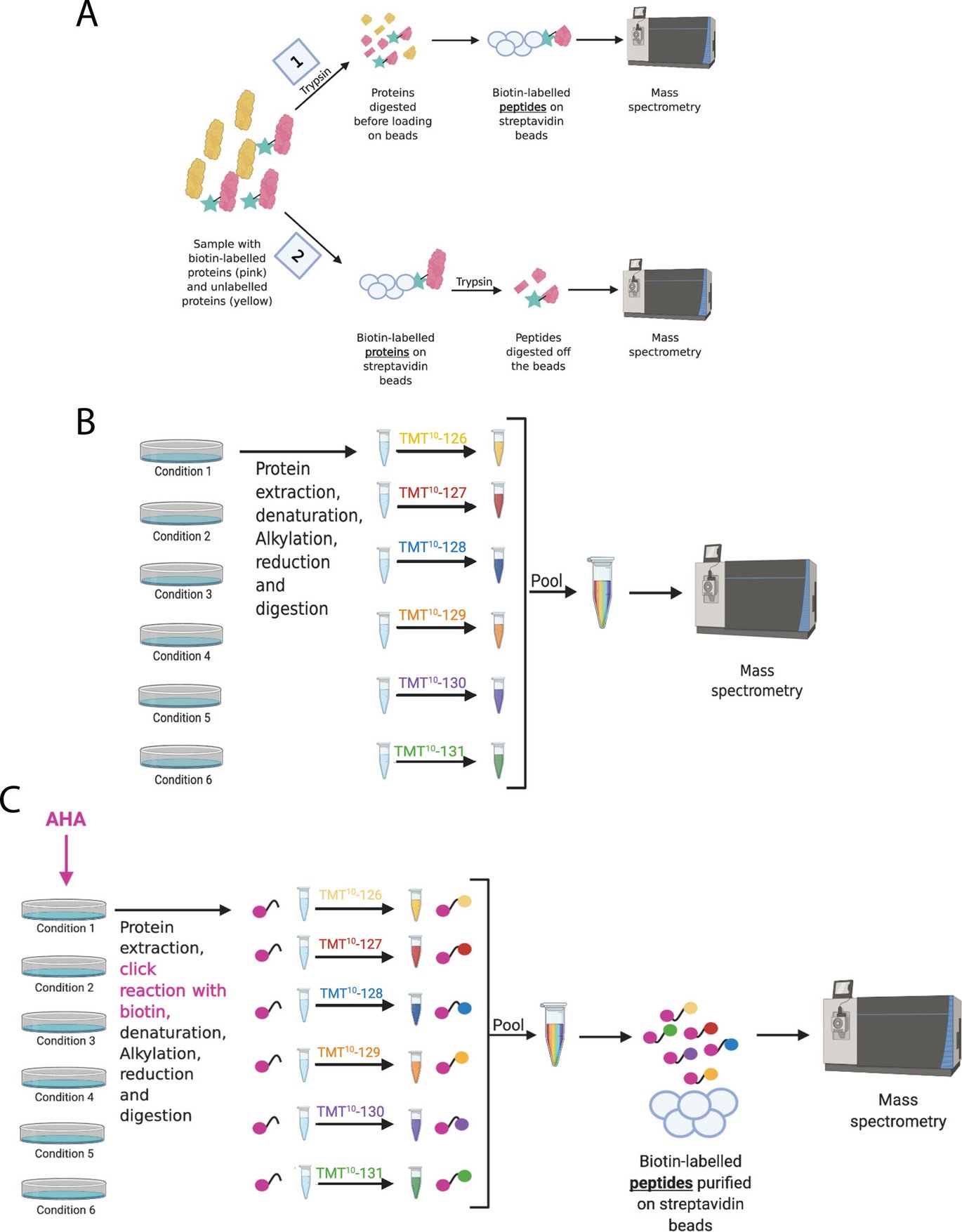New proteomic method provides novel insights into the brain’s plasticity
Researchers have added a special tagging method to the traditional technique, increasing the sample size nearly fivefold when detecting newly synthesized proteins (NSPs) across various brain conditions.



When we learn something new, form a memory, or experience stress, our brain produces or synthesizes new proteins. This process helps strengthen neural connections and plays a crucial role in our ability to learn, remember, and respond effectively to various challenges.
By examining newly made proteins, scientists can understand which proteins are made in response to different brain activities or treatments.
Traditionally, detecting new proteins has been challenging, but a method called DiDBiT was developed to improve the detection and measurement of these proteins. However, this method only allowed for the study of two conditions at a time, which limited the researchers' ability to analyze the effects of multiple stimuli and their interactions on protein production in the brain.
In a new article recently published in the Journal of Proteome Research, Associate Professor Sadegh Nabavi, Professor Anders Nykjær and colleagues present an upgraded version of this method, called DiDBiT-TMT, which enables scientists to compare up to nine different samples in one experiment. This method uses a special tagging technique known as TMT (tandem mass tagging) that helps measure and compare protein levels across multiple conditions simultaneously.
New method reveals distinct underlying mechanisms
According to the researchers, the most important takeaway from this development is that DiDBiT-TMT represents an important method for detecting and comparing newly synthesized proteins (NSPs) across multiple experimental conditions:
“By using DiDBiT-TMT on brain slices, we found unique patterns of protein production under different treatments, revealing that the molecular responses vary more than we expected,” explains Sadegh Nabavi, Associate Professor at Molecular Biology & Genetics and DANDRITE Group Leader alumnus.
“Interestingly, we found that the proteins produced after these treatments were mostly different from each other, suggesting that each treatment affects the neurons in unique ways.”
This finding suggests that different brain signals might have distinct underlying mechanisms, even when they appear similar on the surface.
A potential to advance our understanding and treatment of brain disorders
This advancement significantly enhances the ability to study brain function at a molecular level. Not only does it improve the detectability of NSPs compared to traditional methods, but it also allows for the parallel comparison of up to nine samples in a single experiment. This makes it an invaluable tool for investigating how various stimuli, such as chemical long-term potentiation (cLTP) or norepinephrine, influence protein production in the brain.
The broader implication is that DiDBiT-TMT provides researchers with deeper insights into the distinct molecular mechanisms underlying different brain processes and treatments, which could advance our understanding of learning, memory, and potentially inform future therapies for neurological disorders.
About the publication:
Corresponding authors from DANDRITE and MBG:
- Sadegh Nabavi: snabavi@dandrite.au.dk
- Anders Nykjaer: an@biomed.au.dk
First author from DANDRITE and MBG:
- Mariam Gamaleldin: margamal@nu.edu.eg
Facts about study type:
Basic research done on organotypic hippocampal slice cultures. The study developed a combinatorial proteomic method to study changes in the newly synthesized proteins underlying changes in synaptic connections between neurons. Revealing the newly synthesized proteins made upon formation of new synaptic connections is crucial as it can ultimately provide novel insights into how the brain supports memory formation.
Collaborators
Last author and co-corresponding author is:
- John R. Yates, III: jyates@scripps.edu
Affiliation: Departments of Molecular Medicine and Neurobiology, the Scripps Research Institute, La Jolla 92037, California, United States.
Co-first author:
- Nam-Kyung Yu
Former postdoc at the Yates lab at the Scripps Research Institute
External funding
- European Research Council
- DANDRITE
- DNRF
- Danish Council for Independent Research
Information on any impartiality issues
The authors report there are no conflicts of interest.
Direct link to the abstract or the scientific article: https://pubs.acs.org/doi/10.1021/acs.jproteome.4c00180
